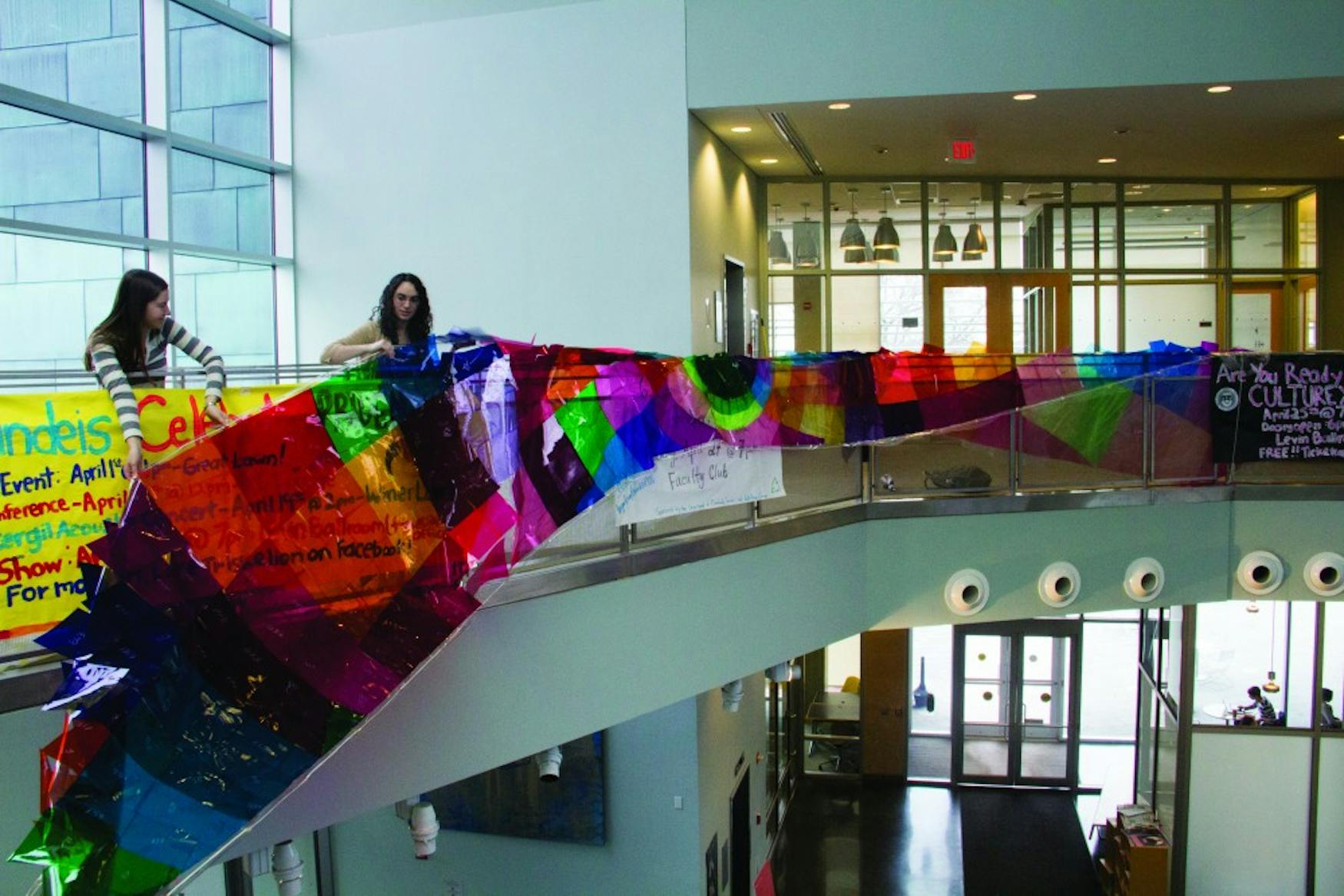Curator helps artists prepare installations
Nine public art installations will be scattered around campus during the Leonard Bernstein Festival of the Creative Arts. These installations will be diverse, ranging from larger-than-life painted cloth figures to visual representations of neuroscience research. They will undoubtedly give viewers pause as they go about their daily lives. But will we ask ourselves the question: How did they get there? The answer to this lies with Sam Toabe, who curated the installations. He is the assistant director at the Samson Gallery in Boston and is currently pursing a masters’ degree in museum studies at Boston University. He was referred to the Festival by one of the gallery’s clients—Prof. Todd Pavlisko (FA).
Toabe has been working with the Office of the Arts since February in preparation for the Festival, but a lot of his job involves interacting with the artists themselves in making plans for installing the art.
In an interview with the Justice, Toabe noted that typically, the role of a curator is to choose the pieces of art that go in a display. But Toabe’s role in the Festival is a little different in this respect—the pieces were chosen by the Office of the Arts before he came on board. So, Toabe’s role has turned out to be mostly dealing with the logistics of the installations—a role that has not turned out to be easy. “It’s always challenging to place the artwork in public spaces. They’re not necessarily constructed like a gallery. So you’re gonna find challenges just with the space of making sure that it’s coherent a space, that it stands out as an artwork,” said Toabe.
And some of the art pieces for this year’s festival are incredibly large and unwieldy. One such work is “Color Theories” by Rachel Berkovitz ’15 and Jess Podhorcer ’15. The 37-foot-long patchwork of multicolored theater gels that are meant to reflect light. The piece, which was installed in the Shapiro Campus Center on Monday, hangs from across the second floor landing. It is hard to miss—the multicolored and semitransparent piece will be apparent to anyone who walks into the SCC—but its installation was no small feat.
According to Toabe, the planning of the installation was a “production.” Yesterday, the artists worked with Toabe to figure out not only where to hang it but also how. The piece required all hands on deck to set up—with Toabe on one end of the landing and Berkovitz and Podhorcer on the other. A basket crane and an electrician were also brought in to direct lights so that they could point at the banner and reflect off of it. Berkovitz and Podhorcer needed to make additional decisions in the process of putting up the banner. The two had underestimated the length of the banner, so when it was hung—because of its weight—it caved downward. The choice was then whether to tighten the banner on both ends and lose some of the colored segments so that it could lay flat or keep all the colored segments and the caved shape.
Toabe said that throughout all of the projects, he has very much enjoyed working with students—most of whom are not associated with art—and getting their artistic perspective.
“It’s been an interesting challenge working with people who aren’t necessarily artists in their name practice but it’s been really rewarding seeing … what kind of perspective they bring to it and what kind of ideas that an artist might not necessarily have when they are approaching an artwork,” he said.
The nine installations will be going up all week and will all be up by the start of the Festival on Thursday. So if you see installations around campus, take a moment to consider their significance. But also take a moment to think about what goes into their displays and the countless decisions that need to be made even after the creation of the piece.



Please note All comments are eligible for publication in The Justice.